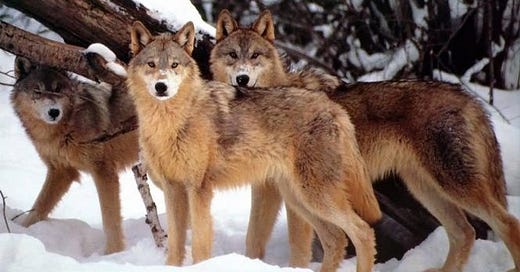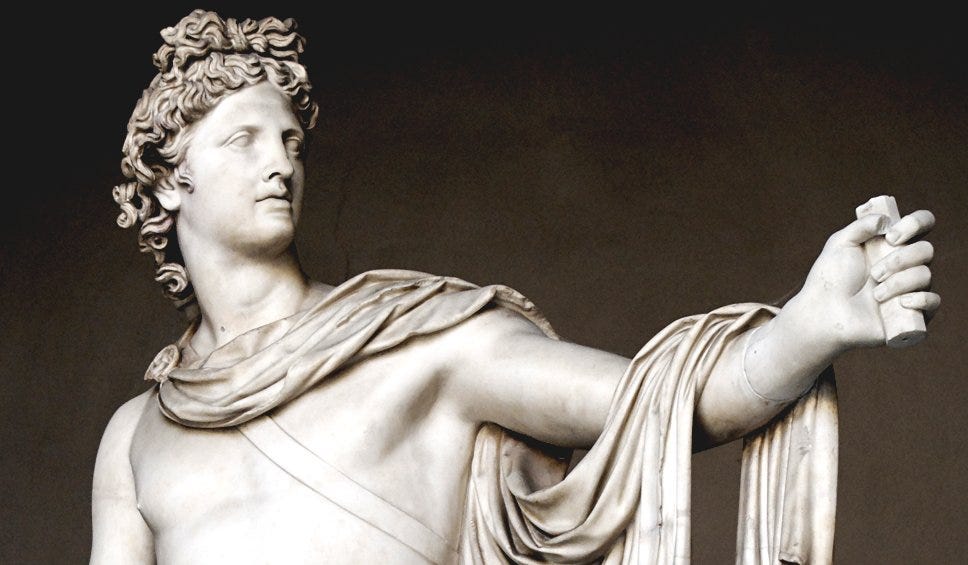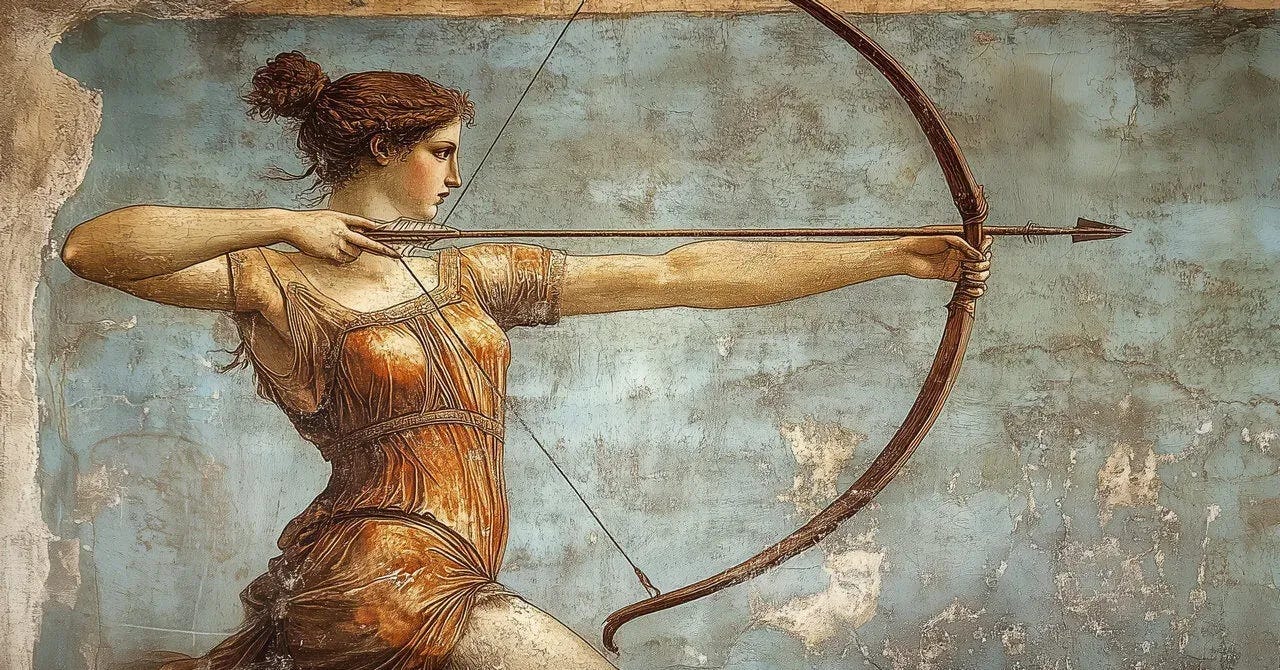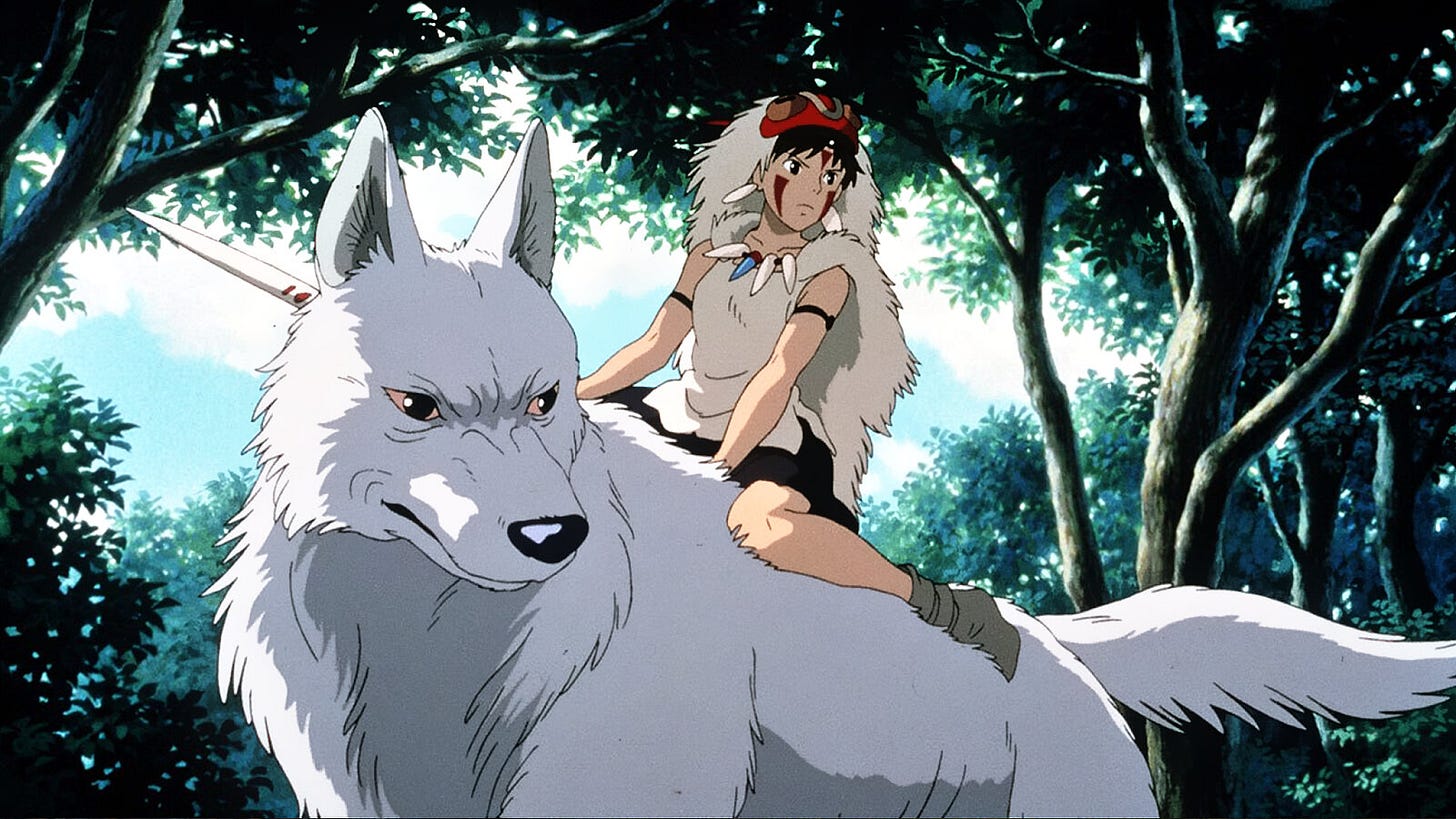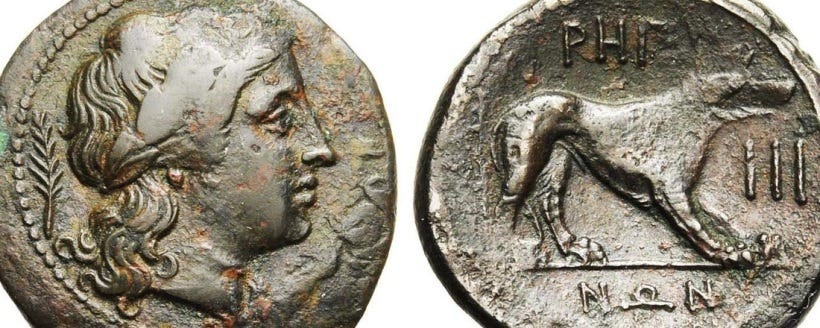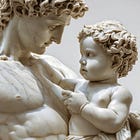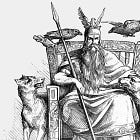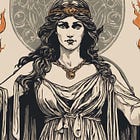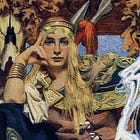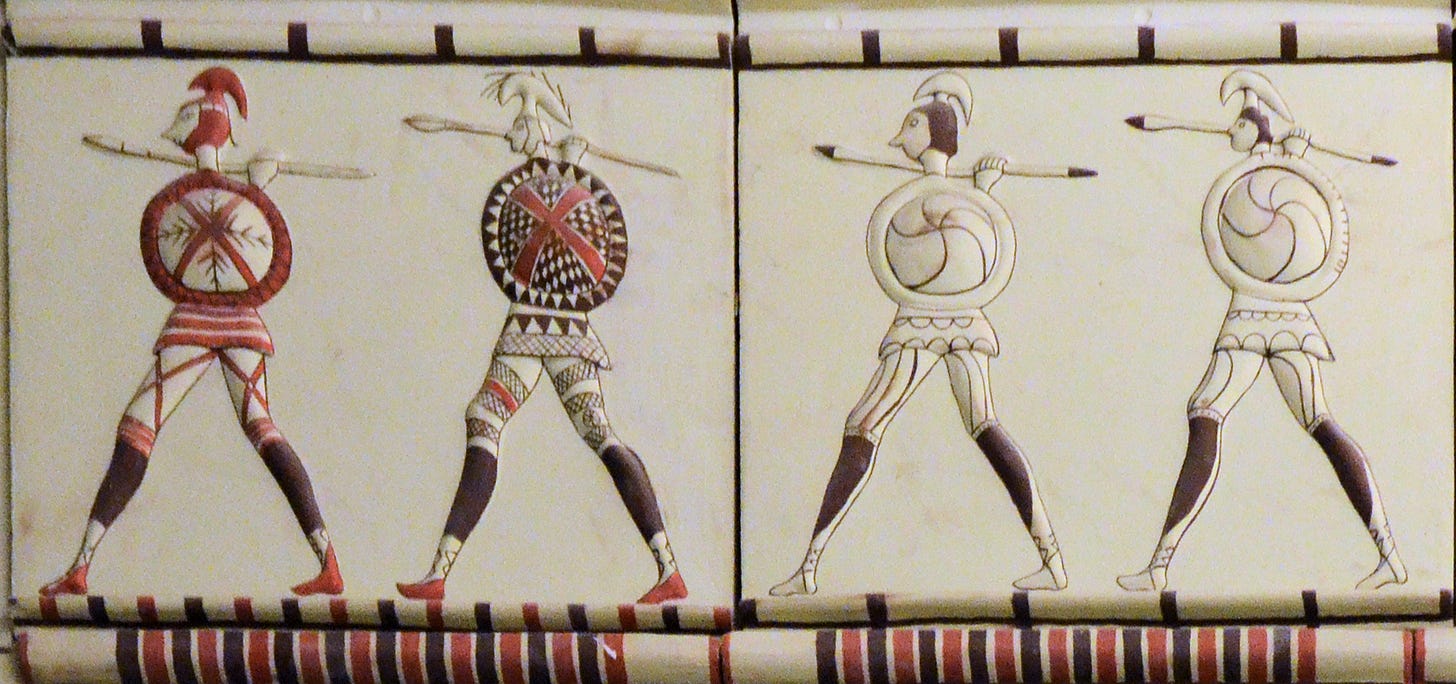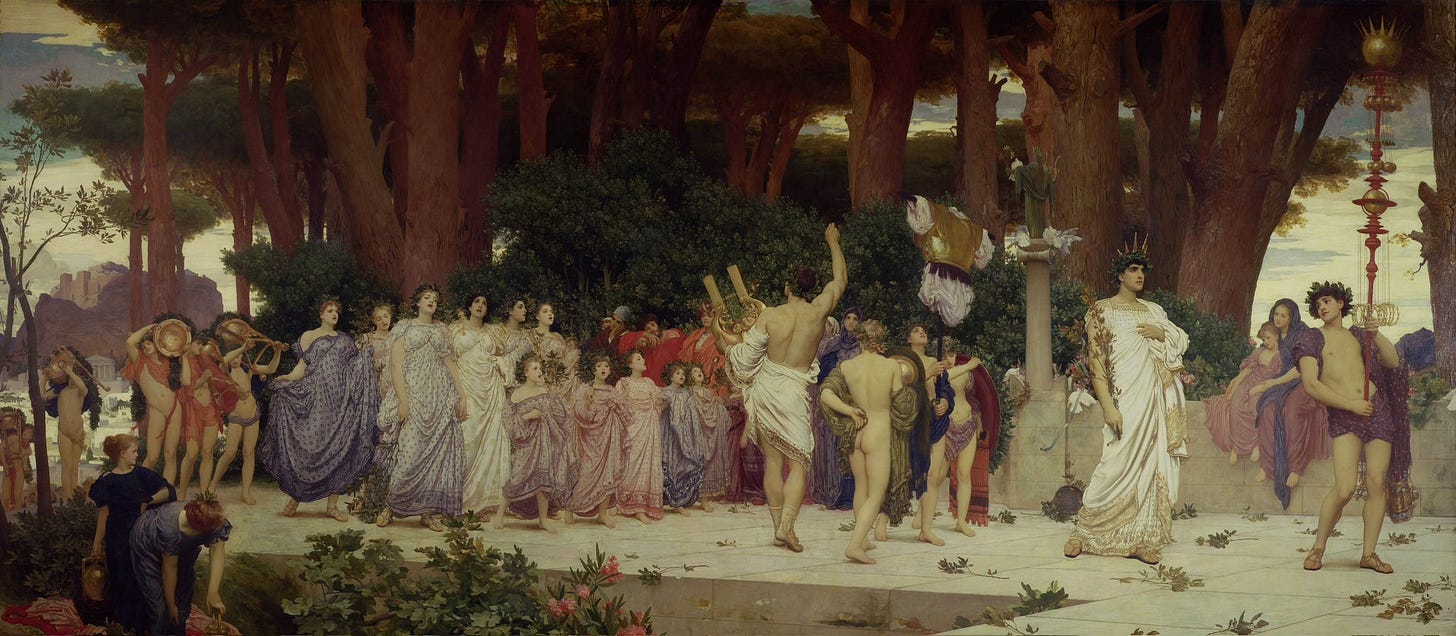In ancient pagan traditions, there were rites of passage for young boys and girls, guided by protective deities like Artemis and Apollo. Kids aged 5-8 learned about nature and wisdom under Artemis’ care. As they grew, young girls went through the Arkteia rite, while adolescent boys underwent similar rites, like the ephebe of Apollo, the Fianna of Ireland, and the Koryos warriors. Basically, the OG summer camp, except instead of arts and crafts, you encounter wolves and divine trance states. Casual. So think of it like spiritual rites that are like a mix between a Swedish Midsommar, Studio Ghibli, and a Berserk training arc.
The Fianna, for example, had three guiding mottos: Purity of heart, strength of limbs, and action matching speech. They were mentored by elders on their journey in the wilderness, where they became strong, compassionate, and independent men. These men could protect their tribe like wild wolves but also show gentleness and kindness to their families. The deities guiding them, like Apollo and Artemis, were protectors of youth and growth. In this article, I’ll dive into the rites of Wolf-Apollo, exploring its history and how it can be applied in today’s world.
Apollo’s Transformation from Light to Sun God
Alright, let’s talk about Apollo. We mostly know him as that glowing, radiant Olympian god of the sun, right? The one who’s all about light, music, prophecy, healing, and just being this eternal, vibrant force. He’s like the embodiment of the perfect, idealized divine energy, youthful, powerful, and just pure energy. And yeah, he’s the son of Zeus (the big king of the gods) and Leto (a goddess), born on the sacred island of Delos, where he shared his birthday with his twin sister Artemis, who’s got her own cool thing going as the goddess of the hunt and the moon.
But here’s the twist: in the early days, Apollo wasn’t exactly the sun god we know now. He wasn’t all about that sun power at first. Instead, he was more about light, truth, and the arts, like, the whole vibe of music, prophecy, and healing. His connection to the sun didn’t come until later, and it kinda grew as time went on. Yet spoiler alert, he used to be a wolf-shaped chaos guardian guiding sacred soul-initiation rites through underworld fire-dances with a goddess who later becomes Liberty incarnate. 🐺🔥
So how did this happen? It all went down when Greek religious ideas started shifting. Apollo ended up merging with Helios, the Titan who was the OG sun god (think fiery chariot, blazing across the sky). Helios was the one who literally controlled the sun. Over time, Apollo inherited that solar power, becoming not just the god of light, but the literal bringer of sunlight and clarity. This transformation really took off during the Hellenistic period, a time of massive cultural exchange when Greek culture mixed with others, and Apollo’s role got more solar.
Apollo’s Underworld Associations and Wolf Cult
Yet, let’s dive into Apollo’s darker side for a sec. Apollo’s mom, Leto, was not just a regular goddess, she was wild in her own right. She actually took on the form of a wolf while pregnant with Apollo. Kinda mystical, right? But here's the kicker: Leto wasn’t just connected to light and day. She had some serious underworld vibes too, which is why Apollo got that whole "wolf-born" title. In his ancient, pre-Hellenistic days, Apollo wasn’t just a sun god; he was also linked to the underworld, which gives him a mix of light and dark energy. So both solar daddy and shadowy wolf guardian.
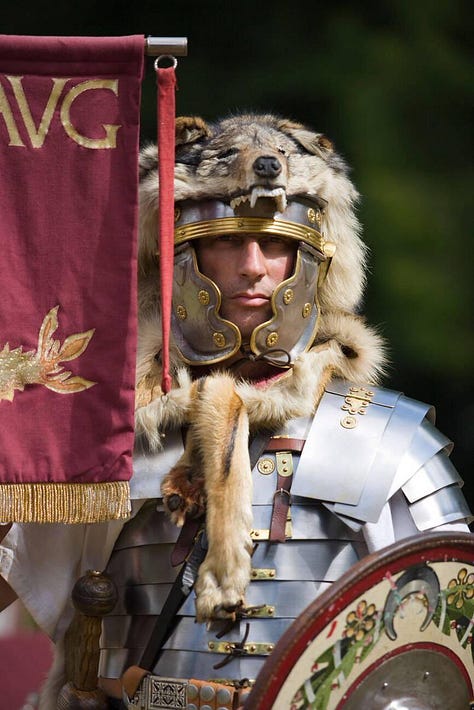
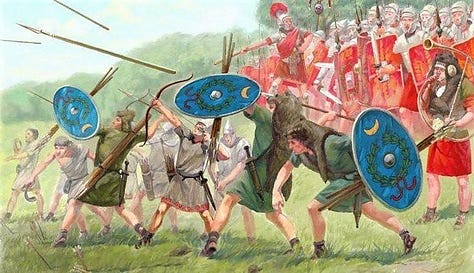
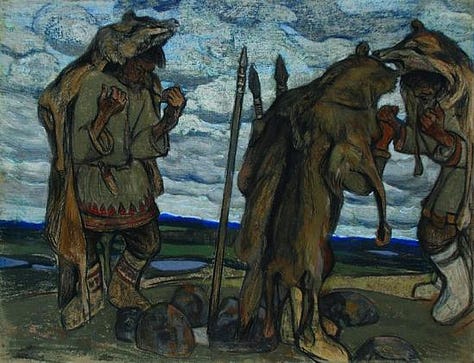
Now, if we look at Apollo’s cult in more detail, there’s this cool part where he’s known as Apollo Soranus, a version of him who had a whole wolf cult going on at Mount Soranus. And this wasn’t just any regular mountaintop. It was connected to Súri, the ancient Etruscan god of the underworld. So, yeah, Apollo wasn’t just playing in the sunlight. He had some serious ties to the realm of the dead.
On top of that, Apollo teamed up with Feronia, an ancient Sabine goddess (who was also a precursor to Juno, btw). Together, they oversaw death and rebirth rituals that brought fertility back from the underworld and healed illness. They weren’t just sitting around talking about it either. They did this by dancing on hot coals and entering trance states on a mountain. Talk about getting deep into some wild spiritual work, right? Imagine your yoga retreat but sponsored by Hades and the Moon. So, yeah, Apollo's got this duality. He’s the god of light, but got deep underworld connections.
The Wolves of the Sacred Wolf-Light
Yet if we go deeper into wolves. In ancient Greece, wolves were associated with the space between day and night, those mysterious hours at twilight when everything feels a little more intense and unknown. This idea of "in between" is also tied to Leto, who’s kinda like the goddess of dusk, when the sun sets. Wolves are like the OG night creatures, connected to both light and darkness at the same time. Basically Twilight hours = liminal spaces = "golden hour when you feel like a Studio Ghibli protagonist."
Here’s where it gets wild: the ancient cult of Wolf-Apollo (yes, Apollo had a whole wolf vibe) is all about this mix of light and chaos. Apollo wasn’t just the sun god; he was also the god who brought the light in some of the most intense moments. We’re talking about those risky new beginnings, the kind of vibes that come with starting something new or wrapping something up at the end of the day. If you’ve ever felt like you’re on the edge between chaos and clarity, that’s this wolf-energy. So it’s giving ✨main character energy✨ at 3AM when you're journaling with tears and Spotify ambience. The wolves are of this twilight and chaos moment, and thus linked to the vital energies from the underworld.
The Greeks also loved to show Apollo Lykeios (aka “Apollo the Wolf”) as this young dude with his hand raised in this "crown moment" like he’s leading the way. Basically he was throwing up the ancient equivalent of “I got this” while channeling Big Wolf Energy™. He was then also known as the protector, especially for young people or the new and vulnerable parts of existence. He was all about saving the herd from danger, keeping famines at bay, and making sure the community survives. Not by denying the shadow, but through the ancient equivalent of what we now call shadow work.
But Apollo wasn’t just the protector. He was a wolf sometimes. He could shift into wolf-form, like how Zeus and Pan had their own shape-shifting moments. There were even stories where Apollo would send a wolf to do his bidding, he had these huge statues of wolves at his temple in Delphi. One of the most hardcore moments of Apollo-as-wolf? He takes out the Telchines (creepy sea creatures) and brings storms that are just as destructive as wolves are to livestock. So, yeah, we’re talking about nature’s crazy forces, both destructive and protective, depending on the moment. Basically Apollo sending his wolf-pack to spiritually nuke the sea demons.
In the city of Tarsus (which was colonized by the Argives, btw), the cult of Apollo the Wolf was huge. The wolves weren’t just a side note, they were like his ride-or-die crew. On coins from Tarsus, you can even see Apollo holding two wolves. In another scene, Demeter is shown chilling with Apollo’s wolves while she’s on the long search for Persephone. The wolves were basically Apollo’s messengers, and his protectors.
Oh, and the poet Lycopron totally said that Apollo’s two wolves represented his two prophets. It's like Apollo had his squad of prophetic wolves always ready to step in. When people called upon Apollo, they didn’t just ask for guidance, they were really like, "Yo, Apollo, lord of the wolves, send your wolves to tear through our enemies and bring the noise!” A bit dramatic, but hey, that's ancient gods for you. 💀
The Sacred Kindling of Fire
So Apollo, as the wolf god, represents those in-between spaces, like the moments between day and night, life and death, civilization and the wild. His wolf connection is all about bridging these extremes, linking the sun with the moon, rationality with instinct. In the ancient Proto-Indo-European (PIE) worldview, the Koryos, a group of wolf warriors, was the heart of sacred community rituals, embodying both human strength and divine connection. The Koryos was tied to transitional spaces: the borders between life and death, order and chaos, light and shadow.
The wolf, in many Indo-European myths, is a liminal animal tied to the god of the hunt. It represents both the dark side of nature and the potential for spiritual rebirth and its light side. Twilight, that moment between light and dark, is thus seen as a time of potential, where the soul’s fire can be rekindled. In these liminal moments, the Koryos, part warrior, part shaman, would perform rituals to reconnect with the spirit world and awaken their inner fire. AKA the mystical hour when your existential crisis hits just right and your higher self ghost-types you. Yet they faced it head on, and through the rites went from boyhood to wolf-warrior. Facing their inner wolf, their inner primal shadow.
The youthful form of Dionysus, represents the soul's rebirth through this chaos ritual, bringing ecstasy, and revelation. This fiery renewal thus happens through ritual dance, music, and ecstatic release. Apollo, as the wolf god, guides Bassareus in these rituals, helping protect and nurture the young divine spirit alongside the warrior-shamans of the Koryos and later, the Korybantes. To rekindle the wholeness of the soul. 🦊
Sovereignty Goddess and Cult of Wolf-Apollo
The cult of Wolf-Apollo and his warrior band, like the Koryos, is connected to a Sovereignty Goddesses like Juno-Feronia, who is tied to the underworld, youth, strength, and renewal. Such type goddesses help guide the wolf-warriors through cycles of death and rebirth. While Zagreus represents death and the dark underworld, through Juno-Feronia and Wolf-Apollo, this death is followed by a powerful renewal. The Koryos, originally tied to Zagreus, embody both destruction and regeneration.
Zagreus’ dismemberment symbolizes the scapegoat role in the underworld, linked to death, darkness, and winter, while the reborn Bassareus represents prosperity, life, joy, and the sun. These cycles prepare the warrior elite for leadership. The wolf-warriors, like small, roaming bands of hunters, would undergo rites of passage, which included hunting, training, feasting, and poetry. This echoes the Fianna, an elite warrior group who, like the Koryos, were initiates before joining the full tribe. You can think of them like soul-tribe or chosen family kinda deal, but wilderness adventure.
Initiation rituals like the Hirpi, Salii, Fianna, and Wild Hunt also consistently involved a goddesses of sovereignty, hunting, and warriors. Goddesses like Holda, Diana, next to Hecate, the Morrígan, Feronia, and Juno are all tied to these themes, emphasizing the link between the divine feminine and the sacred warrior path. As it’s about becoming strong and kind, not ruthless.
The Morrígan and the Fianna's Sacred Rites
The actual Fianna warrior bands also have been connected to the Morrígan, who had been also connected to a ritual surrounding dog sacrifice (known as a Koryos ritual). One such example of a link between them is found at the burnt mound sites known as “the cooking pit of the Mórrígan”. These sites are found in the wild areas, and are also associated with outsiders such as the Fianna, as well as with the hunting of deer. Next another site called “the two breasts of the Mórrígan"), a pair of hills in Meath County, further is suggested by scholars as a probable link between her and the Fianna as a sort of tutelary goddess, also known as a guardian deity. With their most sacred duty and responsibility to restore the wholeness of the realm.
The Korybantes and the Renewal of Dionysus
The Korybantes (born from Apollo) within the Orphic mysteries, connected to the Greek Orpheus, also had the sacred responsibility of restoring harmony and balance, facilitating the rebirth of Dionysus, the god associated with the cycles of nature's growth and decay. They where originally actually connected to the nymphs and Hecate instead of Rhea or Phrygian goddess Cybele. Dionysus here represented the divine child, and thus the inner child, that carries the potential of rebirth and the restoration of the authentic self. Orpheus himself then also was dedicated to Hecate instead. We can see this also with him creating temples to Hecate (known for dog and cattle sacrifice) instead of these other figures. Hecate is also referred to as mistress of the animals, originally.
Hecate’s Role
In Greek mythology, Hecate is a powerful goddess with the ability to grant fertility, protect women in childbirth, and bring wealth and success to her followers. She was also tied to helping guide souls to the underworld. Worshipped across Greece, Rome, Egypt, and Anatolia, Hecate was a deeply transformative figure. In her association with the moon and the starry night, she also embodies the archetype of the Dark Feminine, representing the shadow aspects of the psyche, such as fear, anger, and desire.
Hecate is depicted as a triple goddess, with three faces representing her dominion over the earth, sea, and sky. She’s also associated with the moon’s phases and the crossroads, symbolizing transitions and choices, next to witchcraft. Who were also all symbolic of her connection to the underworld. The bull and snakes are sacred to her, and her role in fertility mirrors that of Artemis and Diana.
Dog sacrifices were common in her cult, particularly in places like Thrace and Athens. This was also an important ritual within the original Proto-Indo-European Koryos was well, who much like the Irish Fianna where dedicated to the Morrigan, also dedicated to a Sovereignty Goddess. As much as the Korybantes were once dedicated to Hecate. All different faces of the same Neolithic Goddess.
And the reason for this connection with the wolf-warriors of Wolf-Apollo and such a Goddess figure, is both as she is the literal symbolic queen of the tribe, as Sovereignty Goddess. Yet in a deeper psychological lens, she symbolises the soul of the wolf-warrior. What Carl Jung would thus call the Anima, so the emotional and relational side of us. Which is also a guide into the dark depths of the unconscious. So we are not just letting our inner wolf howl, but also let the Anima express all her pent up rage from having been repressed by Kronos.exe, for all of you out there who have been told to shut up, or repress your feels.
So the idea of the wolf-warrior and the Anima expressing "pent up rage" is about giving voice to those emotions that have been silenced or ignored. The metaphor of the wolf’s howl is an act of reclamation, of allowing one's raw emotions, particularly those that have been repressed (like anger, sadness, or frustration), to be heard and integrated into the self. This is what empowers you, as repressing anger and your emotions leads to feelings of disempowerment and helplessness.
Practicing the Path of the Wolf Today
In an era that constantly demands conformity, finding a channel to express primal emotions, especially anger, can feel difficult. Yet, tapping into our primal energy and embodying assertiveness through movement, dance, and ritual is a powerful way to reclaim our autonomy. You don’t need to run into the forest with a spear (unless you really want to). You can step into this path by embracing the twilight spaces in your own life, so those messy, raw, transitional times when you feel between versions of yourself. Light a fire. Speak your truth. Dance barefoot. Feel both the chaos and the clarity. That’s the rite. That’s the wolf within you. That primal wisdom.
1. Dance as a Tool for Anger and Liberation
Anger isn’t inherently destructive, it’s a raw energy that can propel us toward self-empowerment and meaningful change when channelled properly. Just as the ancient warriors and shamans used movement to confront and release pent-up aggression, you too can find liberation through primal dance. Create a safe, open space, whether it's your room or a quiet outdoor spot, and begin moving freely. Let your body fully express what words cannot. As you move, allow your body to "shake out" the tension, letting anger flow through your limbs. This practice can be liberating, bringing you back into alignment with your true self and serving as a powerful reminder that your anger is valid and potent.
In addition, dance is a form of ecstatic expression. You don’t need at all any formal choreography; allow the body to follow its natural impulses, just like the ancient rites where warriors danced to invoke strength and connection to the divine. Some modern friendly examples could include putting on intense, energetic music, like industrial beats, heavy metal, or percussion-heavy tracks, and then letting your body express whatever is there. This doesn’t have to be a performance. Allow the trance-like state to take over, and feel your body come alive with the energy of the moment.
2. Reclaiming Assertiveness and Personal Power
A practice that can be particularly helpful is to create rituals of self-affirmation. Using your body, move through moments of assertion: whether it's standing tall with your shoulders back, making eye contact with yourself in a mirror, or speaking your truth into the air. This might sound simple, but these small, deliberate actions remind us of our power. They help you embody your own self-worth and channel your anger constructively, transforming frustration into clarity.
Additionally, look to nature as a teacher, just as Artemis and Apollo guided their youth through rites of passage in the wilderness, so can nature itself help guide you. Go on solo walks or hikes where you can immerse yourself in the primal environment of the forest, feeling the earth beneath your feet. This grounded experience will help you release any held-back emotions, and the rhythm of the natural world will help you reconnect with your own.
4. Trance States for Emotional Reclamation
The ancient cultures understood that trance states were powerful conduits for accessing hidden emotional reserves. They used ritualistic dance, chanting, and even ecstatic states to tap into the raw energy of their souls. To bring trance work into your life, you can begin with simple breathwork exercises. Deep, rhythmic breathing, which can be accompanied by drumming or chanting, can quickly bring the mind into a relaxed yet focused state. You can also integrate these practices into your dance; the repetitive nature of breathwork and movement can push you into a trance-like state where deep emotional shifts can occur.
For instance, you could chant your frustrations out loud or call on powerful words that resonate with you in the moment. This practice helps release stuck energy and open up a space for creative expression. Music also plays a huge role here. Incorporating ritualistic or shamanic sounds into your playlist, such as drumming beats, nature sounds, or chanting, can help induce a deeper state of trance. From there, you can allow your body to flow freely, letting the anger or frustration rise, peak, and then eventually dissipate. The goal is not to suppress but to embrace and transform it.
6. Empathy and the Power of a Supportive Community
Just as the ancient rites were often group efforts, finding your tribe is crucial to modern-day rites of passage. Dance and expression of anger can sometimes bring up vulnerable emotions, so connecting with others who share your spiritual, emotional, or personal journey is essential. Online communities, local groups, or even close friends who understand the importance of these practices can offer you not just validation but a sense of shared purpose.
Look to spaces that celebrate community healing through dance and collective expression. Whether it’s a drum circle, a group dance session, or even organizing a collective movement event with a purpose, sharing in the collective energy amplifies its impact. In these spaces, not only will you find solace and shared understanding, but you’ll also deepen your ability to process anger and empower each other.
7. Embodying Your Inner Warrior
A warrior is not only skilled in physical combat but also in emotional resilience and spiritual fortitude. Embracing this archetype means understanding that your energy is sacred, and your anger, when properly channeled, can fuel transformation not just in yourself, but in the world around you. Take a page from ancient warrior tribes, who saw strength as part of a broader collective responsibility. Each warrior was part of a larger network, which protected the community, supported the weak, and nurtured the future.
In today’s world, your emotional expression can be part of this collective change. You can embody your inner warrior by standing up for the things that matter to you, advocating for the marginalized, and using your voice to create space for others. Whether through activism, personal development, or simply helping those in need, your assertiveness can be a source of strength for others.
Start by writing down your intentions. What would you like to change in your community, your world? Channel that desire into action, and then celebrate the moments of power and transformation that emerge from your dance and emotional expression. The dance of anger is not just about release; it's about the creation of new possibilities.
🧬 Soulware 3.2 Patch Notes: Wolf-Apollo Edition
Wolf-Apollo Core Integration: Your connection to the sacred wolf is now active. Access the liminal spaces of twilight where both light and shadow dance. May contain traces of fur.
Wolves of Rebirth: Empower your inner child to emerge stronger after enduring the trials of life. Let that anger flow into dance and sacred rage. Bonus feature: tail wags when emotionally aligned.
Bug Fixes:
Kronos.exe Overwrite Fix: The Kronos.exe internal programming that sought to confine your existence to the predictable and routine has been removed. Enjoy greater freedom in shaping your path without fear of external control. (Warning: spontaneous moonlit frolicking may occur.)
Ego/Power Issues Resolved: Updates to ego-validation algorithms now ensure that you are not seeking external validation, but rather stepping into your full sovereignty. Reconnect with your primal energy without the interference of society’s constraints. Howl responsibly.
Known Issues:
Primal Fear Activation (Not for the Faint-Hearted): Some users may experience an intense reaction to shadow work or soul challenges triggered by Wolf-Apollo’s duality powers. If you are new to this type of transformation, we recommend gradual activation to avoid overwhelming the system. Users identified as “omega pups” may require extra grounding snacks and cuddles.
